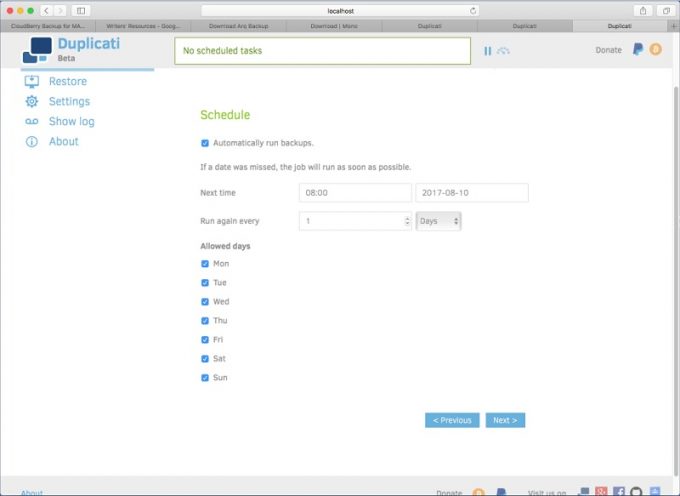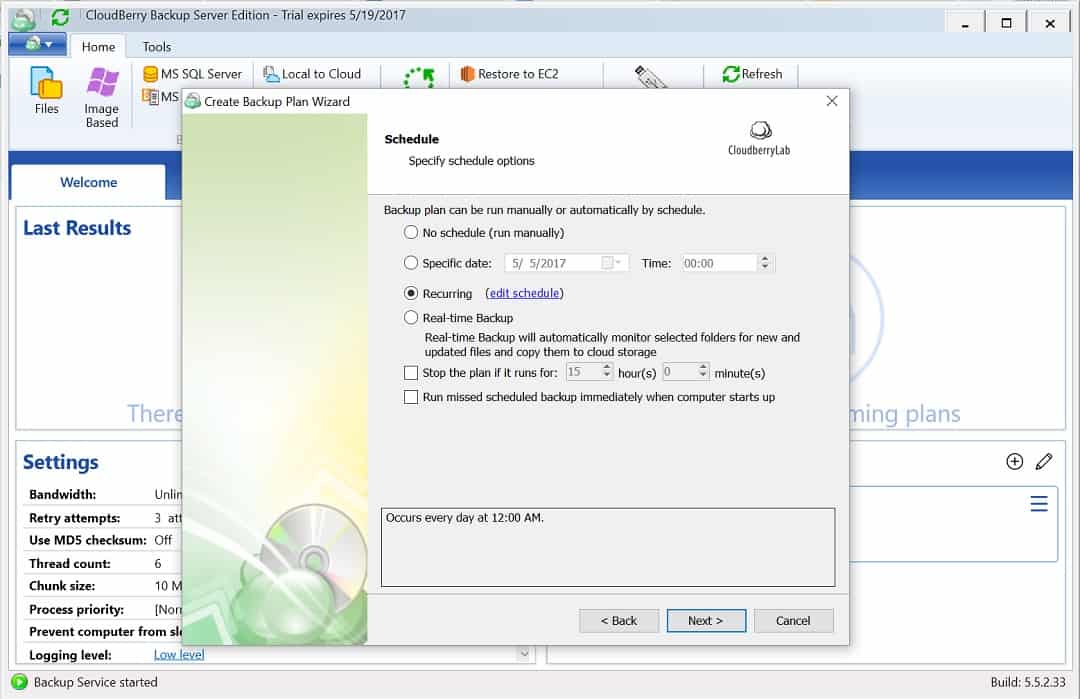

- CLOUDBERRY BACKUP EXCLUDE FILE MANUAL
- CLOUDBERRY BACKUP EXCLUDE FILE FULL
- CLOUDBERRY BACKUP EXCLUDE FILE SOFTWARE
- CLOUDBERRY BACKUP EXCLUDE FILE WINDOWS
While many of these recommendations are just my opinion based on my years of experience working with clients in the backup space, you should make any adjustments to fit your business needs. That way if something goes wrong with that change you can bring the machine back to where it was before the change very quickly.
CLOUDBERRY BACKUP EXCLUDE FILE SOFTWARE
This can include service packs to production type software such as Exchange, SQL, or other software that is critical to your business, new hardware, or installation of new software.
CLOUDBERRY BACKUP EXCLUDE FILE MANUAL
I would also suggest that before any major change to the machine that you are backing up to do a manual disk image backup. This type of schedule will give you an easy quick way to get files and folders back, which is where a majority of the restores we see happen, along with giving you a good disk image base while being backup space conscious.
CLOUDBERRY BACKUP EXCLUDE FILE FULL

CLOUDBERRY BACKUP EXCLUDE FILE WINDOWS
For instance when your hard drive dies, your Windows will not boot or is corrupt, your machine is stolen, an upgrades goes horribly wrong, or other major disaster that requires a complete rollback of the entire machine and do a system image recovery. Where disk image backups really shine is in a complete disaster type of situation. Some software such as NovaBACKUP for example, allow you to backup changes since the last full disaster recovery backup. This is a very simple to configure type of backup where you just select an entire drive, partition, or an entire machine, which typically backs up the entire selection you have selected. A disk image backup, can be called a number of different names such as: bare metal backup / recovery (BMR), disaster recovery backup, ghost backup, image level backup, block level backup, system image recovery or a clone of your machine. Depending on your situation, this might be a great way to save a little cash.An image backup is simply an image or copy of your entire system, including your operating system. If you’re using Amazon S3, this translates to fewer copies (and therefore somewhat reduced durability) of your backup, but also means a 33 percent discount off Amazon S3’s standard pricing. You can choose up to 256-bit AES encryption, meaning your files will be secure from all but the most determined and well-funded hacking teams (hopefully that’s not something you have to worry about).Īnother way to maximize cloud efficiency is with CloudBerry Backup’s “reduced redundancy” option. You can decide, for example, whether to compress your files for a faster backup, or encrypt them for a massive bump in security. But CloudBerry Backup comes with a lot more depth. Options for power usersĬhoosing files and folders is a pretty basic part of any backup process. You can also run a backup based on date, for another dimension of finely tuned file saving. This can be a super-useful tool that sweeps up a diverse range of data based on when it was used, rather than leaving you to manually find various files and folders. You can also select files to back up based on when they were last created or modified.


 0 kommentar(er)
0 kommentar(er)
